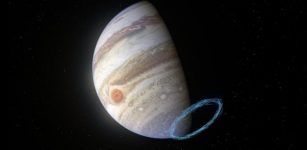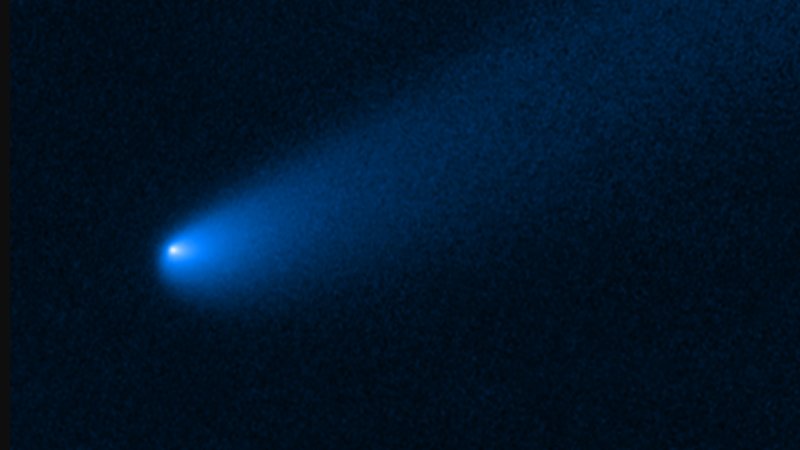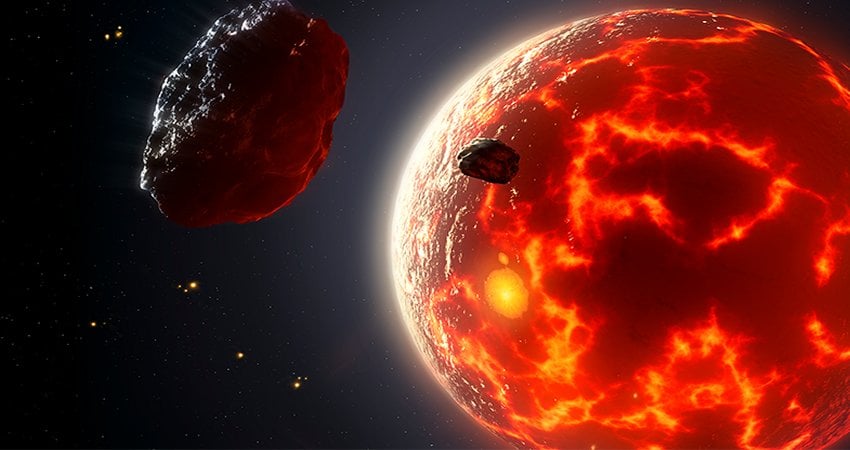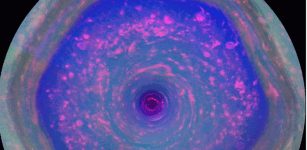Finding Moons’ Hidden Oceans With Induced Magnetic Fields
Eddie Gonzales Jr. – MessageToEagle.com – In the 21st century, planetary scientists have become increasingly aware that subsurface oceans consisting of liquid water exist within objects throughout the solar system.
Because water is a universal requirement for life on Earth, these bodies—mostly moons—are enticing targets in the search for extraterrestrial life.
NASA’s proposed Trident mission would explore Neptune’s largest moon, Triton, which potentially hosts an ocean with liquid water under its ice shell. Credit: NASA/JPL-Caltech
A primary way of deducing the existence of an unseen ocean is through an induced magnetic field. These fields originate from a unique application of Faraday’s law of induction, which states that a time-varying magnetic field creates an electric current when applied to a circuit.
Water that is salty enough to remain liquid in cold space environments is very conductive; at the same time, a moon’s orbit through a planet’s rotating magnetic field exposes the moon to a field strength that varies with time.
These effects combine to induce an electric current within the ocean, which, in turn, generates an induced magnetic field emanating from the moon.
However, observing the magnetic field that results from this process is a difficult task.
The induced field is much weaker than the planetary field that permeates the local environments. If a moon has even a tenuous atmosphere, its ionosphere can generate yet another induced magnetic field, which can lead to false-positive ocean detection.
And for flyby missions that have spacecraft equipped with a magnetometer, the available data will be quite limited or even nonexistent if the spacecraft does not pass close enough to sense an induced field.
Cochrane et al. present a new method for dealing with these difficulties based on predictive modeling and a principal component analysis. They selected a single close flyby of Neptune’s largest moon, Triton, developed for the Trident mission concept proposed under NASA’s Discovery Program. This event would produce just 12 minutes of usable data from which to extrapolate the existence of a subsurface ocean.
The technique begins by using a computer model to speculatively simulate the magnetometer measurements made during a flyby of the Triton system with various potential physical properties, such as ocean depth, thickness, and conductivity. To cover the available parameter space, they construct more than 13,000 model runs that include magnetic fields induced from either the moon’s ionosphere alone or the ionosphere plus a subsurface ocean.
A principal component analysis of these model data then identifies the features that best account for the variability in the modeled magnetometer observations. This creates a simple transformation of the incoming spacecraft data to a representation that most clearly distinguishes the ionosphere-only and ionosphere-ocean scenarios.
The authors demonstrate that this novel approach is both more sensitive and more robust to noise than more traditional approaches.
Importantly for outer solar system exploration, they show that a single flyby may be sufficient to identify the existence of an ocean beneath the surface of a moon like Triton.
And if multiple flybys are available from an orbiter, identification becomes more assured and enables characterization that provides insight into habitability.
Written by Eddie Gonzales Jr. – MessageToEagle.com Staff











